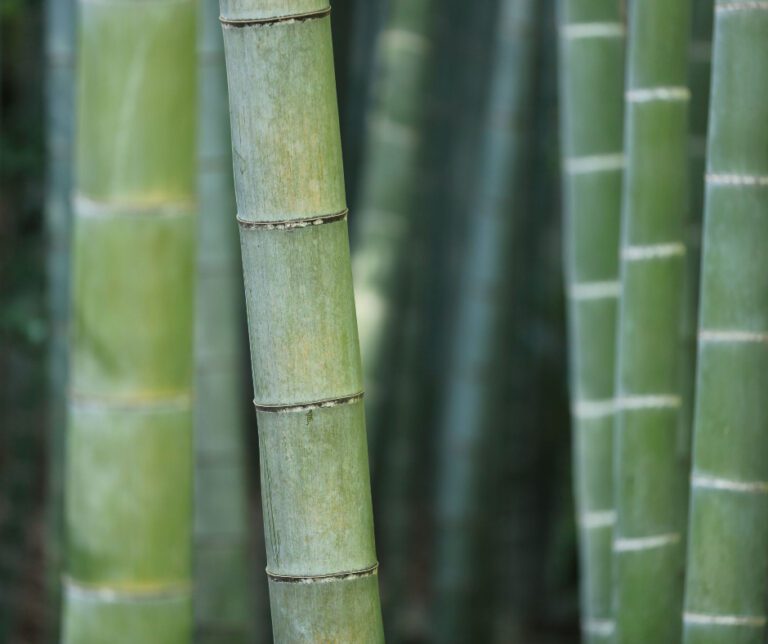Recent Innovations in Bamboo Technology

Bamboo, a versatile and sustainable resource, has been used for centuries in various applications, ranging from construction and furniture to paper and textiles. Recently, innovations in bamboo technology have expanded its potential uses and improved its performance in various sectors. Today at Bamboo Grove, we’re discussing the latest advancements in bamboo technology, highlighting its environmental benefits and the diverse applications emerging from these innovations.
Bamboo as a Sustainable Alternative
Bamboo is known for its rapid growth rate, with some species growing up to 91 cm (35 inches) per day. This remarkable growth makes bamboo a highly renewable resource, with the ability to be harvested in three to five years, compared to decades for traditional hardwoods. Furthermore, bamboo’s root system helps prevent soil erosion and sequester carbon, contributing to its status as an environmentally friendly material.
Advancements in Bamboo Composites
One of the most significant innovations in bamboo technology is the development of bamboo composites. These composites combine bamboo fibers with other materials, such as plastics or resins, to create products that are stronger, more durable, and versatile. Recent advancements include:
- Bamboo Fiber-Reinforced Polymers (BFRPs): BFRPs are emerging as a sustainable alternative to traditional fiber-reinforced polymers (FRPs) used in construction and automotive industries. These composites offer high strength-to-weight ratios and improved environmental performance.
- Bamboo Plastic Composites (BPCs): BPCs are being utilized in various applications, including decking, furniture, and automotive interiors. They provide the aesthetic appeal of natural bamboo while enhancing durability and resistance to weather and pests.
Bamboo Textiles
The textile industry has seen significant innovations in bamboo technology, with bamboo fibers being used to create eco-friendly fabrics. Bamboo textiles are known for their softness, breathability, and antibacterial properties. Recent advancements include:
- Bamboo Viscose: Also known as bamboo rayon, this fabric is made by chemically processing bamboo pulp. It is lightweight, breathable, and has a silky texture, making it popular in clothing and bedding.
- Mechanically Processed Bamboo Fibers: This method involves mechanically crushing the bamboo stalks and combing out the fibers, which are then spun into yarn. This process is more environmentally friendly than the chemical method and results in a fabric with similar properties to linen.
Bamboo in Construction
Bamboo has been traditionally used in construction, especially in regions where it is abundant. Recent technological advancements have improved its performance and expanded its applications in modern architecture and engineering:
- Engineered Bamboo Products: Products like laminated bamboo lumber and cross-laminated bamboo panels have been developed to provide higher strength and stability. These products are used in flooring, wall panels, and structural components.
- Bamboo Reinforced Concrete: Researchers are exploring the use of bamboo as a reinforcement material in concrete. Bamboo’s tensile strength and flexibility make it a potential alternative to steel rebar, especially in regions prone to earthquakes.
Bamboo in Energy Production
Innovations in bamboo technology have also extended to the energy sector, with bamboo being used as a biomass resource for energy production. Key advancements include:
- Bamboo Charcoal: Bamboo can be converted into charcoal through pyrolysis, providing a sustainable alternative to traditional charcoal. Bamboo charcoal is used for cooking, heating, and even water purification due to its porous structure.
- Bioenergy: Bamboo is being used as a feedstock for bioenergy production, including bioethanol and biogas. Its high cellulose content makes it an efficient source of biofuels, contributing to renewable energy initiatives.
Bamboo in Electronics and High-Tech Applications
The unique properties of bamboo are also being harnessed in the electronics and high-tech sectors. Innovations include:
- Bamboo-Based Electronics: Researchers are developing bamboo-based substrates for electronic devices, such as flexible displays and solar cells. Bamboo’s natural flexibility and thermal properties make it a suitable material for these applications.
- Bamboo Batteries: Bamboo fibers are being explored as a component in battery technology, particularly in the development of sustainable and high-capacity batteries. Bamboo-based carbon materials are used in anodes for lithium-ion batteries, offering potential improvements in energy storage.
Environmental and Economic Impact
The innovations in bamboo technology not only provide sustainable alternatives to traditional materials but also have significant environmental and economic impacts:
- Carbon Sequestration: Bamboo plantations sequester large amounts of carbon dioxide, helping mitigate climate change. The use of bamboo products further contributes to carbon reduction by replacing more carbon-intensive materials.
- Economic Opportunities: Bamboo cultivation and processing create job opportunities, particularly in rural and developing regions. The growing demand for bamboo products supports local economies and promotes sustainable development.
Challenges and Future Directions
While bamboo technology has made significant strides, several challenges remain. These include:
- Standardization: Establishing standardized methods for processing and quality control is crucial for ensuring the consistency and reliability of bamboo products.
- Market Acceptance: Increasing awareness and acceptance of bamboo products in mainstream markets is essential for their widespread adoption.
- Research and Development: Continued investment in research and development is needed to explore new applications and improve existing technologies.
Going Green for the Future
Innovations in bamboo technology are transforming this ancient material into a cornerstone of modern sustainable development. From construction and textiles to energy and electronics, bamboo’s versatility and environmental benefits are driving its adoption across various industries. As research and development continue, bamboo technology holds the promise of contributing significantly to a more sustainable and resilient future.
Few plants offer the strength and beauty that bamboo does. It is truly a plant of emmaculate design.
Learn More about the uses for bambooWe are dedicated to the promotion and use of bamboo throughout the world. Bamboo is a plant that offers limitless potential for the future. It offers us strength, sustainability, versatility, and a green alternative.
Bamboo Grove on Twitter
Bamboo Grove YouTube Channel
Moline, IL
info@bamboogrove.com